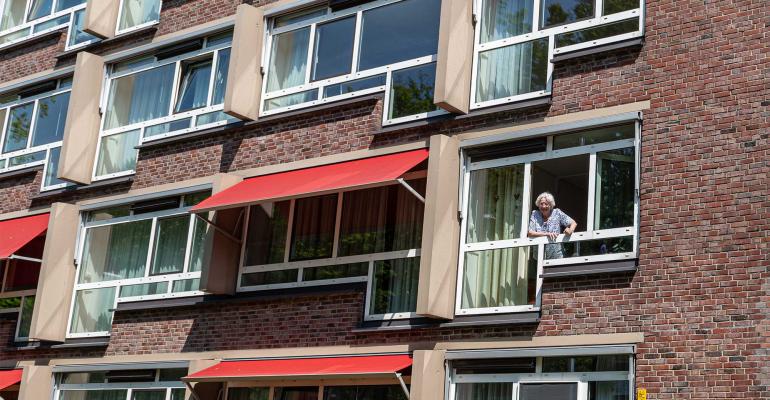Although expenses are a concern, the bigger issue for operators is a decline in occupancies and slowing rent growth that could weigh on NOI and put downward pressure on sale prices. According to NIC MAP data, seniors housing occupancies fell 2.8 percent in the second quarter to average 84.9 percent—the largest quarterly decline since reporting began in 2005. Occupancies at skilled nursing facilities were more severely impacted, dropping 6.5 percent to 80.2 percent compared to a 3.2 percent decline for assisted living to 82.1 percent and a 2.4 percent dip for independent living facilities to 87.4 percent.
Respondents have mixed views on whether occupancies will rise or fall further over the next 12 months. Nearly half of respondents (45 percent) predict an improvement in occupancies, while 42 percent said that occupancies are likely to decline and 13 percent anticipate no change.
Although respondents appear surprisingly optimistic that occupancies will rise, the overall average expectation is for a slight increase of 25.5 basis points. In addition, the results show a clear deterioration in confidence when compared to past surveys. Notably, 72 percent of respondents had predicted an increase in occupancies in the 2019 survey.
Realistically, the outlook for occupancies over the next 12 months is going to depend heavily on the path of the coronavirus and what happens in term of levels of infection during peak flu season in the fall and winter months. However, the positive views may be attributed to the fact that seniors housing properties have made it through the first wave of COVID-19, and many operators are now seeing some signs of occupancy stabilization and a return of leasing activity. For example, most of NHI’s operators are budgeting a flat year for the balance of 2020.
“We’re watching that very closely to see if that stays on track,” says Pascoe. “Initial indications are that traffic is up, but we need to see those convert to sales, and the only way that is going to happen is with continued confidence in the product type and the world at large.”
Within NHI’s portfolio, needs-driven housing has been more resilient as compared to discretionary properties where people moving into independent living properties are usually making lifestyle choices.
“We have seen traffic drop off dramatically in discretionary properties, because people are just deferring the decision until they can have a little more clarity on what the virus is doing,” says Pascoe. Occupancies at the REIT’s continuing care retirement communities (CCRCs ) also have held up a bit better because there is a built-in needs-based component.
According to NIC MAP Data, annual rent growth is slowing, but still positive, declining from a growth rate of 2.6 percent in the first quarter to 2.1 percent in the second quarter.
More than half of respondents (54 percent) expect continued rent growth over the next 12 months compared with 30 percent who think rents will decline and 16 percent who said rents are likely to remain the same. That is stark drop in sentiment compared to previous surveys in which a strong majority—upwards of 70 percent—have said that rates were more likely to rise.


